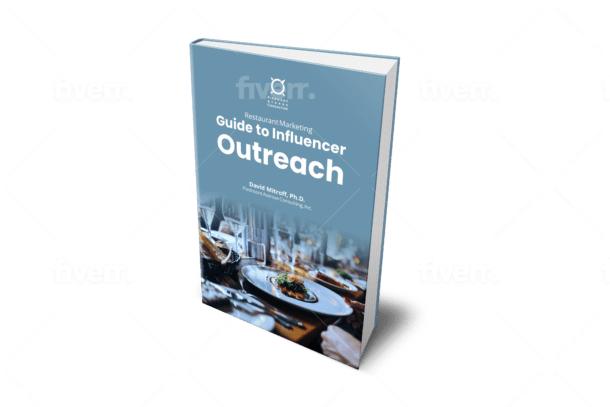Why customers select certain brands amidst fierce competition remains an elusive puzzle for many enterprises. Assumption-driven attempts often miss the mark. This underscores the immense value attitude and usage (A&U) studies offer through direct customer insights, guiding everything from redefining product propositions to crafting emotionally resonant campaigns.
Benefits of A&U Studies
Here are 8 ways well-designed recurring A&U studies augment enterprise success through informed decision:
- Uncover Customer Relationships: Quantify emotional connections and rational drivers of brand affinity relative to competitors. Spot bonding gaps early.
- Identify Brand Awareness and Sentiment: Gauge memorability, sentiment, and perceptions around messaging, identity, and interactions to make communications more compelling.
- Evaluate Brand Equity: Assess the contributed value of the brand association itself in terms of perceived quality, intent, and usage beyond functional product benefits.
- Pinpoint Usage Barriers: Diagnose why target groups hesitate or delay usage despite awareness to address friction through pricing, access, or misperceptions.
- Discover Usage Occasions: Identify patterns around contextual usage triggers and complementary products associated with mapping end-to-end journey optimization opportunities hidden in the data.
- Inform Product Development: Let customer-provided insights shape innovation pipeline prioritization decisions based on emerging niche demands for “jobs to be done.”
- Optimize Marketing Strategies: Refine strategic budgets, media selection, and creative direction according to audience nuances revealed through granular analysis of campaign resonance and memorability.
- Facilitate Expansion Planning: Quantify appetite and reduce launch risks as you enter new verticals or territories backed by usage indicators predicting conversion potential and ideal partnerships.
While standard market research furnishes broader category sales data, A&U exploration uniquely exposes consumer psychology and grassroots trends influencing purchase journeys before impacting bottom lines. Now
Exploring A&U Study Methodologies
Attitude and usage study fuse quantitative surveys with qualitative discovery techniques that are fluidly adapted to research needs, whether category-wide or brand-specific, across diverse industries. Common approaches include:
Quantitative methodologies gather wide-scale inputs that can be statistically modeled to gauge directionality and strength of customer sentiments through numeric measurement. They isolate “what’s happening”.
Qualitative techniques derive deeper insights from limited respondent pools through active engagement mechanisms revealing the “why” behind observed tendencies useful for testing concepts or experiences interactively. Budget qualitative phase pilots to guide strategic emphasis areas for larger quantitative investigations where warranted.
While closely intertwined, these core disciplines require different skillsets and analytical approaches for sound design and accurate interpretation amplified by world-class consumer insights explore usage and attitude options around:
- Target audience: Defining representative respondent profiles and ideal sample sizes.
- Research objectives: Translating business goals into clearly-defined initiative-driven research questions.
- Methodology: Determining appropriate data gathering mechanisms – surveys, interviews, etc.- that fit the purpose.
- Data analysis: Applying statistical modeling and segmentation techniques illuminating patterns within findings.
Beyond the Basics: Advanced attitude and usage study Techniques
Sophisticated tools expand and enhance consumer intelligence extraction from A&U initiatives through automation, scale, and precision. For example:
- Online Panels: Leverage on-demand access to specialized consumer focus groups registered with profile attributes that qualify relevancy to each research topic.
- Mobile Surveys: Gather mass inputs tapping into always-connected smartphones as a data collection mechanism reaching global, demographically diverse respondent pools in a scalable manner.
- Social Media Listening: Monitor brand and category chatter in real-time across networks to identify trends and opportunities through data mining tools and AI-driven text analysis capabilities quantifying sentiment.
- Neuromarketing: Novel biometrics and eye tracking tools uncover emotional, subconscious reactions to marketing stimuli opening an invaluable window into the consumer mind relative to declaratory feedback.
Applying attitude and usage study Insights for Marketing Success:
Many departments derive immense benefits from embedding recurrent A&U learnings into planning and optimization supporting enterprise advancement holistically such as:
- Developing Targeted Marketing Campaigns: Get granular with tailored outreach campaigns focused on audience micro-segments revealed through psychographic nuances tracked into conversion funnels.
- Optimizing Product Development: For maximum appeal, allow early feature conceptualization phases to be shaped directly from usage context insights and stated needs.
- Enhancing Customer Experience: Journey mapping exercises utilizing attitudinal data pinpoint friction points, while loyalty driver analysis tailors retention initiatives and channel management.
- Creating Effective Communication Channels: Reshape channel consumption patterns through messaging personalization tuned to consumption preferences, context, and device tendencies illuminated by research initiatives.
- Measuring Marketing Effectiveness: Quantify campaign ROI when tactical outreach efficacy gets tied back to shifts in specific penetration or usage rates aligned to strategic KPIs in a closed feedback loop framework.
Conducting A&U Studies: A Step-by-Step Guide
While substantial value comes from ad-hoc research initiatives, the most successful organizations implement mature recurring A&U tracking frameworks. Here is a phased overview:
- Define your research goals: Outline the types of questions needing answers around positioning, packaging, messaging, etc and metrics requiring tracking. Align to business objectives.
- Develop a research plan: Construct an end-to-end project blueprint covering target respondent profile parameters, methodologies, timing, analysis plans, and an estimated budget to power decision-making.
- Design the research instrument: Build quantitative surveys incorporating necessary question types (single/multi-choice, rankings, text analysis, etc) to isolate data points of interest. Script qualitative discussion guides separately.
- Recruit participants: Promote involvement through opt-in panels or screening criteria-based recruiting plans tapping channels aligned to target group characteristics and openness to sharing attitudes. Incentivize as required.
- Collect data: Distribute online surveys for asynchronous completion. Conduct one-on-one interviews or focus group sessions in person or virtually using video chat tools to note responses. Record wherever possible.
- Analyze the data: Process results applying filters and cross-tab analysis highlighting trends linked to key questions outlined initially. Statistical software isolates predictive relationships between data sets.
- Develop recommendations: Identify repeating themes within conclusions drawn that represent threats requiring intervention or present opportunities for messaging improvements, feature additions and overall growth hacking leveraging the customer’s voice.
- Track and measure results: Continuously gather data over planned intervals to benchmark progression on acted-upon recommendations through metric lifts – consideration, usage frequency, etc. paired with business KPIs in perfect sync.
Conclusion
Implementing a well-designed, consistent attitude and usage research framework provides unmatched visibility into the hearts, minds and behaviors of target customer segments empowering organizations to preemptively meet needs.
Convert assumptions into actions. Let proven methodologies guide strategic roadmaps harnessing meaningful consumer insights associated with lasting enterprise advancement. Businesses thrive long-term by growing together with evolving customer confidence built through an intimate understanding of their aspirations. Commit deeply to their voice.








